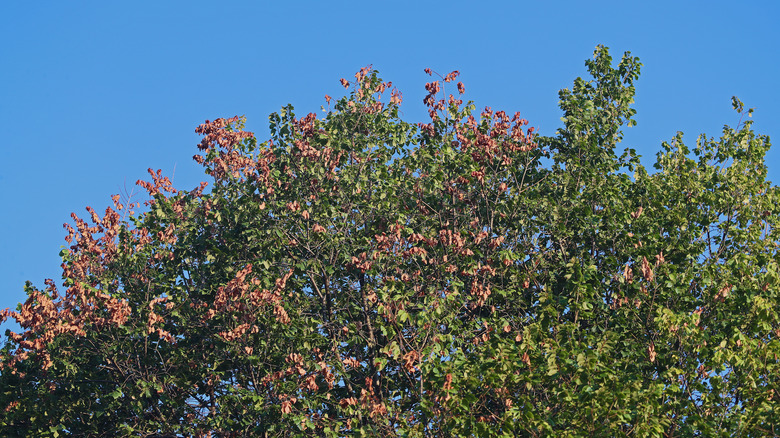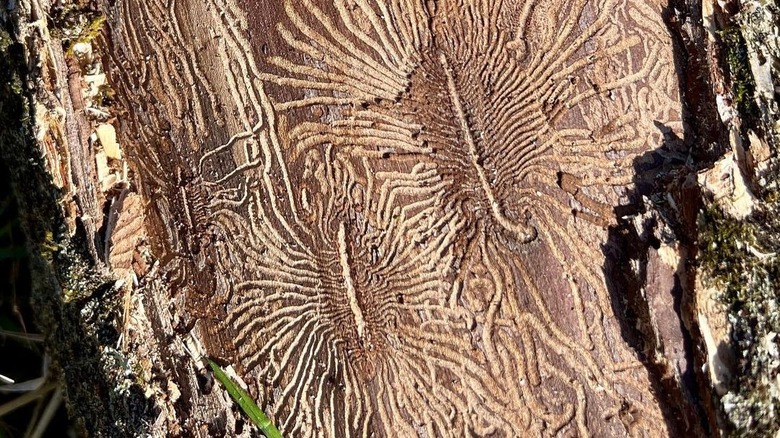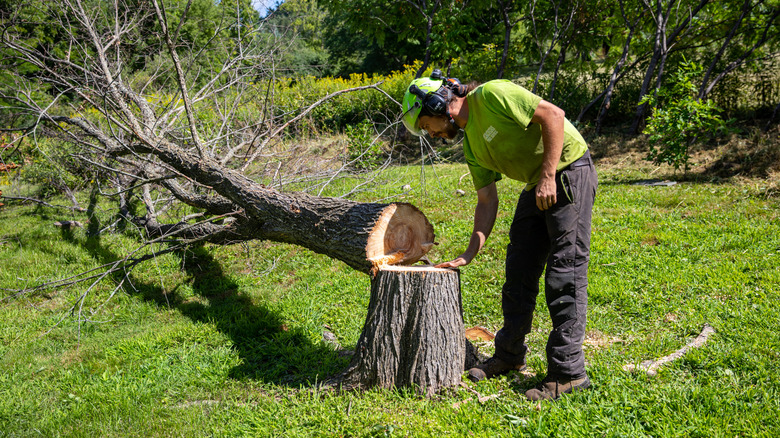Use These Tips To Identify Dutch Elm Disease On Your Backyard Trees
Elm trees are a beautiful feature to have because they change with the seasons, create shade in a hot sunny backyard, and can grow impressively large trunks and bushy, full leaves. Healthy elm trees can live for hundreds of years, but unfortunately, many elms' lives are cut short by a rampant fungal infection known as Dutch elm disease. Dutch elm disease is especially common to elms in the eastern half of the United States, but it can infect elms almost anywhere around the world. To an untrained eye, Dutch elm disease can be tricky to identify, but it's crucial to recognize the infection as quickly as possible to minimize damage and slow the spread to other elms. Some trademarks to watch out for include yellow, drooping, or curling leaves, shriveled brown "flagging" leaves, elm beetle galleries, and streaked sapwood.
Of course, because elms are deciduous and semi-deciduous trees, it's not uncommon to see a yellow, brown, or bare elm tree. However, if you notice changes that are out of season or a single dying branch on an otherwise healthy tree, your elm could be infected with Dutch elm disease. Learn more about where Dutch elm disease comes from, how it progresses, and what you can do to identify and control the spread.
Dutch elm disease progression and symptoms
Dutch elm disease earned its name because it was originally discovered and studied in the Netherlands, but it is believed to have originated in Asia. It is caused by Ophiostoma fungi, which can infect all species of elms across North America, Europe, and New Zealand. Ophiostoma spores are spread between trees by burrowing elm bark beetles. Beetles themselves can cause damage to elm trees, but they are especially harmful if they carry Ophiostoma spores. Once inside the bark, the fungus causes rapid vascular wilt by feeding on the elm's tissues and clogging the vascular system. Dying trees are even more attractive to beetles, and larvae burrow intricate designs when they hatch, known as insect galleries. Dutch elm disease can kill trees in as little as three weeks and almost always succeeds within two seasons.
Unfortunately, there is no cure for Dutch elm disease, but you can stop the infection from spreading to your nearby trees and ravaging the local population. If you notice signs of vascular wilt, including yellow, drooping leaves, crispy "flagging" leaves, or insect galleries, cut a section from the dying branch, peel back the bark, and observe the wood. A healthy elm tree will have pale, cream-colored wood, but an infected branch may show a dark brown or reddish streaking pattern. The best way to determine that Ophiostoma is the cause of your tree's symptoms is to call a tree service and supply samples for laboratory testing.
Mitigating the spread of infection
There is no cure for Dutch elm disease; however, you can slow the spread and prevent infection of nearby elms. If you have a tree that is known to be in the early stages of infection, cut away visibly infected branches and burn the limbs. It's best not to bury or chip the limbs, as the fungus cans still survive and spread to other elms through roots. In addition to clearing away infected limbs, clear any dead or rotted wood from your land. This will take away nesting places for elm bark beetles and reduce the odds that they may spread infection.
An arborist will be able to help you decide the best course of action after examining the diseased tree. In some cases, you may need to remove the entire elm tree, as it is likely to die anyway within a few seasons. While removing an elm tree can be saddening, it's better to be proactive than to risk infecting more healthy trees in your area. Responsible homeowners should frequently examine their elm trees, especially if they live in an area prone to the disease, such as the eastern United States. To protect your other elm trees from infection, a trained arborist can administer fungicide treatment every one to three years. For future planting, opt for disease-resistant elm cultivars, such as hybrid Asian elms.


